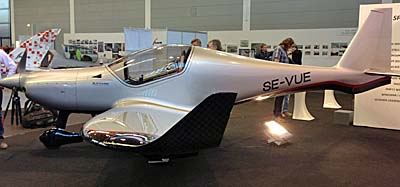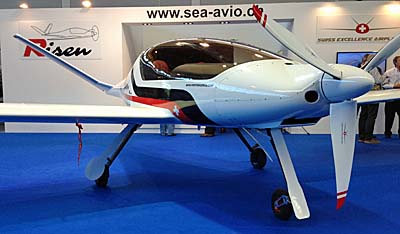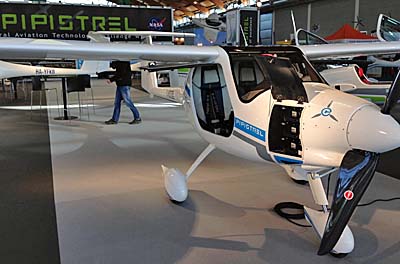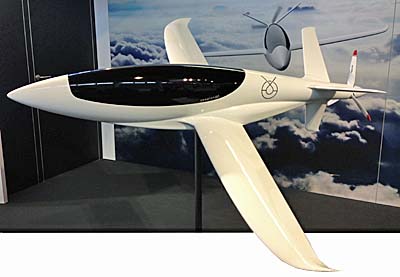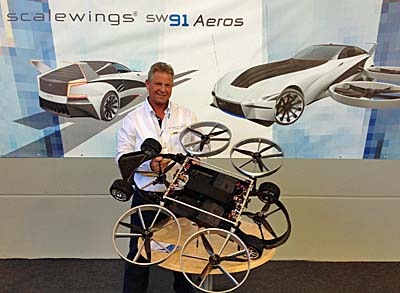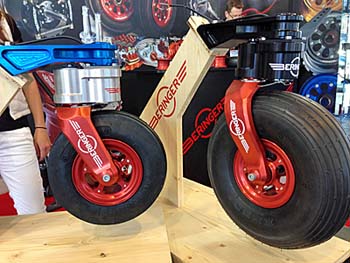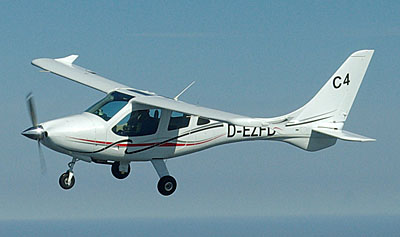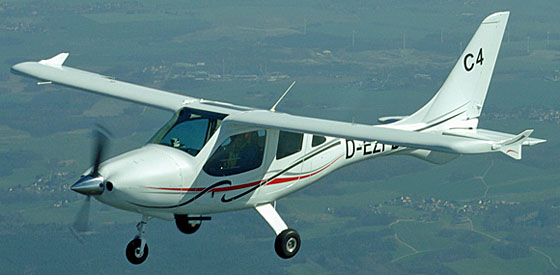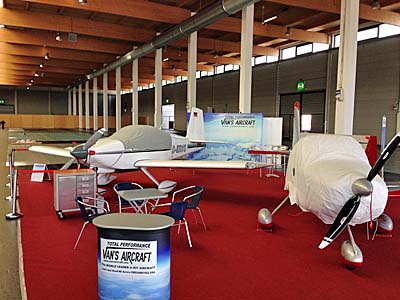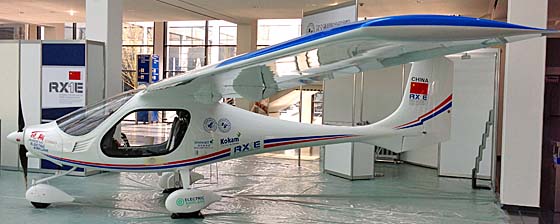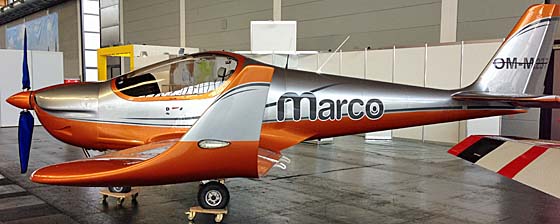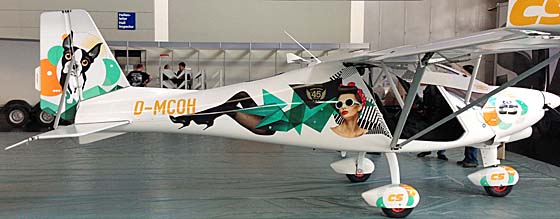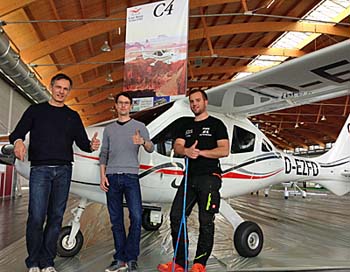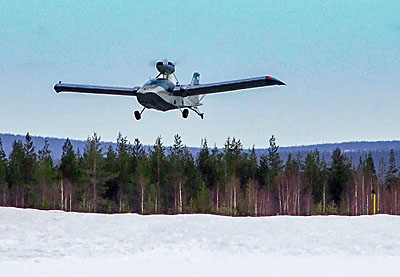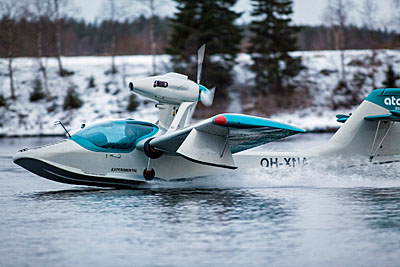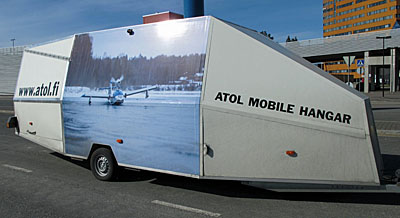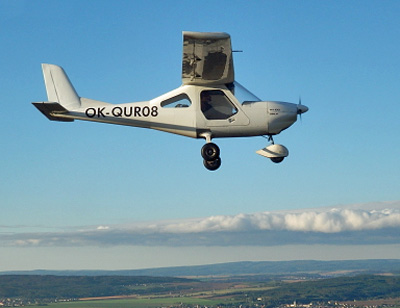
The following article is a guest editorial by Chip Erwin, a name many rightfully associate with the highly successful SportCruiser LSA. A restless entrepreneur, Chip has been working behind the curtain for several years. He emerged with the Zigolo and is now proposing a fresh name for a segment that seems to have energy behind it. I have reported on England’s new SSDR 300 category and I have observed the rejuvenation of Part 103 vehicles. So, on our recent travels to China, I encouraged Chip to express what he has in mind. Article Update 6/15/15 — At the end of this article see our video shot at Sun ‘n Fun 2015 regarding Chip’s electric motor and plans. Is “affordable aircraft” an oxymoron? For most people, probably yes. One answer could be a class of aircraft I like to refer to as a PSA, or Personal Sport Aircraft.



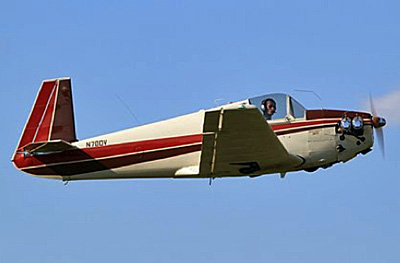
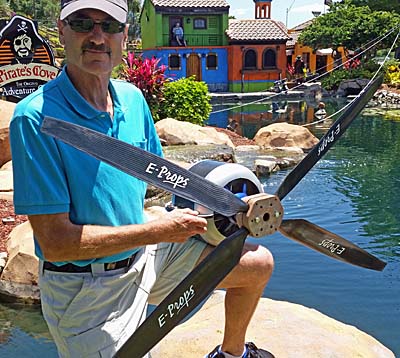
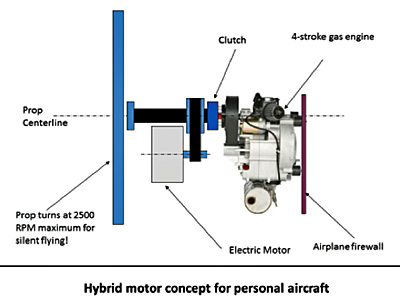
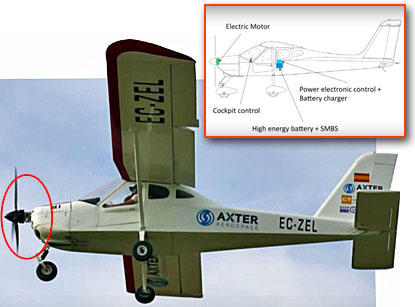 A few years back at Aero 2009,
A few years back at Aero 2009, 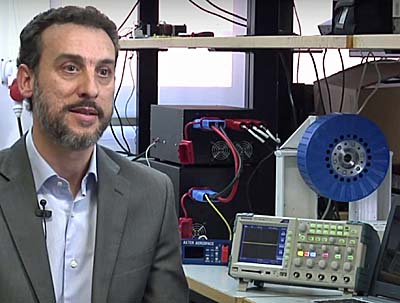 Researchers at Universidad Carlos III de Madrid (UC3M) and the
Researchers at Universidad Carlos III de Madrid (UC3M) and the 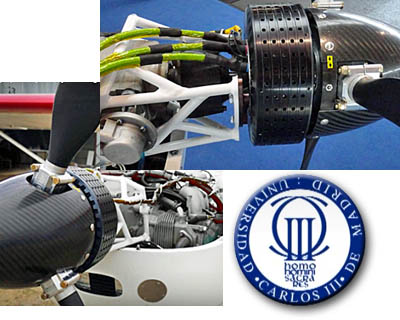 The idea is to equip the plane with an electric engine mounted aft of the propeller but outside the engine compartment (at least in the test article). Such an installation suggests this could be an add-on to existing aircraft once the company decides to commercialize their work.
"If there is a problem with the main engine, this electric engine will start to function, which will provide an additional range of about 20 kilometers, enough for the pilot to land safely," said Barrado, head of the UC3M Electric Power Systems group and one of the other promoters of this invention.
The system features an electric engine that is connected to the conventional engine, a high-efficiency lithium battery, and an electronic system that draws energy from the battery and adapts it to the needs of the plane. It also has a battery charger which operates during the flight.
The idea is to equip the plane with an electric engine mounted aft of the propeller but outside the engine compartment (at least in the test article). Such an installation suggests this could be an add-on to existing aircraft once the company decides to commercialize their work.
"If there is a problem with the main engine, this electric engine will start to function, which will provide an additional range of about 20 kilometers, enough for the pilot to land safely," said Barrado, head of the UC3M Electric Power Systems group and one of the other promoters of this invention.
The system features an electric engine that is connected to the conventional engine, a high-efficiency lithium battery, and an electronic system that draws energy from the battery and adapts it to the needs of the plane. It also has a battery charger which operates during the flight.
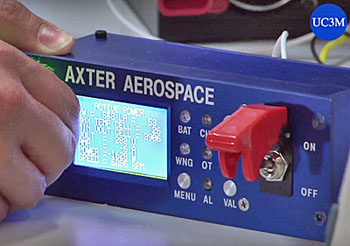 "We maximize the capacity of the battery in generating movement with the electric engine, and we have found that we can also use the system as a hybrid for light aircraft; the pilot can activate it when she wants, adding up to 40 horsepower for takeoff or whatever is needed," said Daniel Cristobal, now also with Axter Aerospace and an alumnus of the UC3M. "This way, it could be used as if it were an electric turbo to increase the power of the aircraft in certain maneuvers."
So, while the UC3M/Axter team see safety as the main point, they are pursuing this idea in the same general directions as Flight Design and Rotax did six years back. Note that the Tecnam P92 has a Rotax 912 for its main powerplant.
This system, which is being marketed and patented internationally, can be installed in light aircraft, new or already operating, they said. It might also eventually be applied to other types of aircraft, such as gyroplanes, gliders, drones and other unmanned aerial vehicles. Besides saving lives and reducing financial losses resulting from accidents, the UC3M group said its architecture reduces the airplane's operating and maintenance costs, lowers fuel consumption and reduces the emission of greenhouse gases and noise pollution.
I wish to give credit to
"We maximize the capacity of the battery in generating movement with the electric engine, and we have found that we can also use the system as a hybrid for light aircraft; the pilot can activate it when she wants, adding up to 40 horsepower for takeoff or whatever is needed," said Daniel Cristobal, now also with Axter Aerospace and an alumnus of the UC3M. "This way, it could be used as if it were an electric turbo to increase the power of the aircraft in certain maneuvers."
So, while the UC3M/Axter team see safety as the main point, they are pursuing this idea in the same general directions as Flight Design and Rotax did six years back. Note that the Tecnam P92 has a Rotax 912 for its main powerplant.
This system, which is being marketed and patented internationally, can be installed in light aircraft, new or already operating, they said. It might also eventually be applied to other types of aircraft, such as gyroplanes, gliders, drones and other unmanned aerial vehicles. Besides saving lives and reducing financial losses resulting from accidents, the UC3M group said its architecture reduces the airplane's operating and maintenance costs, lowers fuel consumption and reduces the emission of greenhouse gases and noise pollution.
I wish to give credit to 
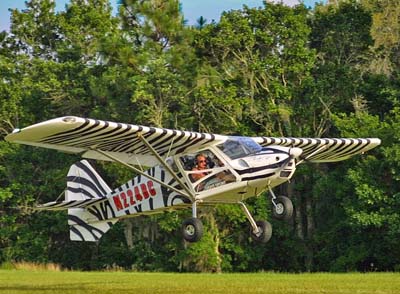 Let's move right to an important point. BushCat is most interesting aircraft with unique features of interest to many and you are much more likely to afford the South African airplane with its 2015 U.S. price of $65,000. That figure covers the
Let's move right to an important point. BushCat is most interesting aircraft with unique features of interest to many and you are much more likely to afford the South African airplane with its 2015 U.S. price of $65,000. That figure covers the 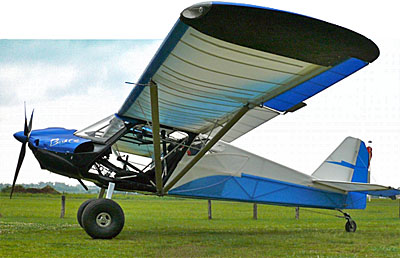 Quite significantly, BushCat's useful load now elevates to 617 pounds with 25 gallons of fuel. That means payload with full fuel is 465 pounds, which allows two 200-hundred pound occupants plus 65 pounds of cargo or other airborne gear. So, a very modest price — about what many expected eleven years ago when the SP/LSA rule was announced, all the more impressive as the time value of money has changed considerable in that period — and you get more utility for the dollars you spend. I'd call that win-win.
I find, as do many others I've asked, that BushCat is a handsome, rather gutsy looking light aircraft. Originally known by the name Cheetah, it has a distinctive cowling for a sharp look and is light and durable — empty weight is barely over 700 pounds — that helps assure robust performance. BushCat is flown with a control stick mounted between both occupants, forward of the central arm rest. As SkyReach notes, "This configuration allows the pilot to keep his or her hand on the stick at all times, freeing the other hand for the throttle and panel mounted instruments." Using a single joystick keeps control system complexity to a minimum and allows easier cockpit entry and exit.
Quite significantly, BushCat's useful load now elevates to 617 pounds with 25 gallons of fuel. That means payload with full fuel is 465 pounds, which allows two 200-hundred pound occupants plus 65 pounds of cargo or other airborne gear. So, a very modest price — about what many expected eleven years ago when the SP/LSA rule was announced, all the more impressive as the time value of money has changed considerable in that period — and you get more utility for the dollars you spend. I'd call that win-win.
I find, as do many others I've asked, that BushCat is a handsome, rather gutsy looking light aircraft. Originally known by the name Cheetah, it has a distinctive cowling for a sharp look and is light and durable — empty weight is barely over 700 pounds — that helps assure robust performance. BushCat is flown with a control stick mounted between both occupants, forward of the central arm rest. As SkyReach notes, "This configuration allows the pilot to keep his or her hand on the stick at all times, freeing the other hand for the throttle and panel mounted instruments." Using a single joystick keeps control system complexity to a minimum and allows easier cockpit entry and exit.
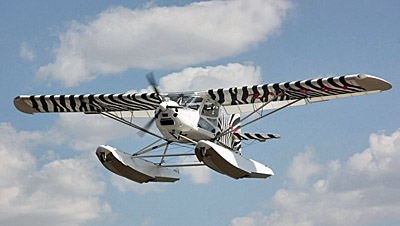 A couple years ago, one of the bigger changes SkyReach engineers made to BushCat was a move from a more complicated braced undercarriage to a sprung undercarriage. The new design uses a slab-style aluminum spring gear that SkyReach says provides a more accommodating load dampening resulting in softer off-airport landings. This airplane does duty in South Africa fighting animal poaching and can handle rough-field operation. It also features removable doors, which may work well for the anti-poaching task but also appeals to those of use that like open cockpit on warm summer days.
BushCat is a sturdy airplane boasting a +6, –4 G rating. It's construction looks simple with a tube-and-gusset arrangement but such designs have proven themselves over literally decades of safe operation. Wing and fuselage use a trilaminate composite fabric covering that requires no paint, saving both effort and weight. Trilam is commonly used in the sailing industry for yacht sails and by hang glider producers. It is an incredibly strong material and has proved itself against the elements; sailboats spend a lot of time exposed to sun and salt water, both tough environmental taskmasters.
Represented in the USA by
A couple years ago, one of the bigger changes SkyReach engineers made to BushCat was a move from a more complicated braced undercarriage to a sprung undercarriage. The new design uses a slab-style aluminum spring gear that SkyReach says provides a more accommodating load dampening resulting in softer off-airport landings. This airplane does duty in South Africa fighting animal poaching and can handle rough-field operation. It also features removable doors, which may work well for the anti-poaching task but also appeals to those of use that like open cockpit on warm summer days.
BushCat is a sturdy airplane boasting a +6, –4 G rating. It's construction looks simple with a tube-and-gusset arrangement but such designs have proven themselves over literally decades of safe operation. Wing and fuselage use a trilaminate composite fabric covering that requires no paint, saving both effort and weight. Trilam is commonly used in the sailing industry for yacht sails and by hang glider producers. It is an incredibly strong material and has proved itself against the elements; sailboats spend a lot of time exposed to sun and salt water, both tough environmental taskmasters.
Represented in the USA by 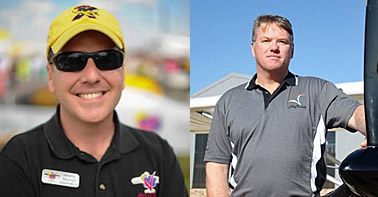 In closing this piece, I want to pay tribute to two light aviation kit builders. In the USA, the loss of Jeremy Monnett stunned many as he and assembly mechanic Mike Clark were killed June 2nd in an aircraft accident near the company's headquarters in Oshkosh, Wisconsin. Jeremy successfully lead the Sonex company in recent years and used a degree in mechanical engineering to create a design of his own, the single-seat, folding-wing Onex ("One-Ex") introduced in 2011.
BushCat importer Daniela Knoll also reported some sad news from the SkyReach factory in South Africa. "Walter de Lange, General Manager of SkyReach, died last week in a weight-shift trike accident. We are all shocked by the news since Walter was a very experienced trike pilot and airfield safety officer," wrote Daniela. "A great man will indeed be missed."
I offer my sincerest condolences to the families of each man and thank both for their significant contributions to light aviation. I thought very highly of Jeremy and will miss his broad, warm smile. I did not know Walter well, but did interview him at Oshkosh in 2013.
In closing this piece, I want to pay tribute to two light aviation kit builders. In the USA, the loss of Jeremy Monnett stunned many as he and assembly mechanic Mike Clark were killed June 2nd in an aircraft accident near the company's headquarters in Oshkosh, Wisconsin. Jeremy successfully lead the Sonex company in recent years and used a degree in mechanical engineering to create a design of his own, the single-seat, folding-wing Onex ("One-Ex") introduced in 2011.
BushCat importer Daniela Knoll also reported some sad news from the SkyReach factory in South Africa. "Walter de Lange, General Manager of SkyReach, died last week in a weight-shift trike accident. We are all shocked by the news since Walter was a very experienced trike pilot and airfield safety officer," wrote Daniela. "A great man will indeed be missed."
I offer my sincerest condolences to the families of each man and thank both for their significant contributions to light aviation. I thought very highly of Jeremy and will miss his broad, warm smile. I did not know Walter well, but did interview him at Oshkosh in 2013.
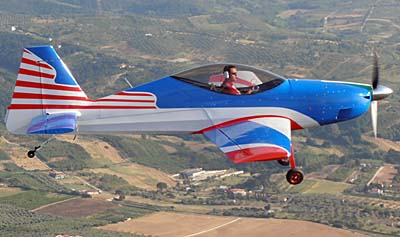 Date #1 was the time when FAA announced
Date #1 was the time when FAA announced 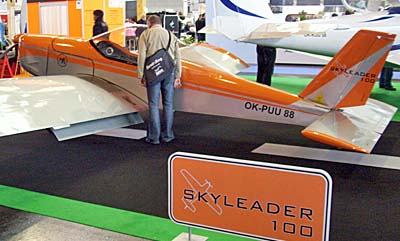 FAA recently came out with
FAA recently came out with 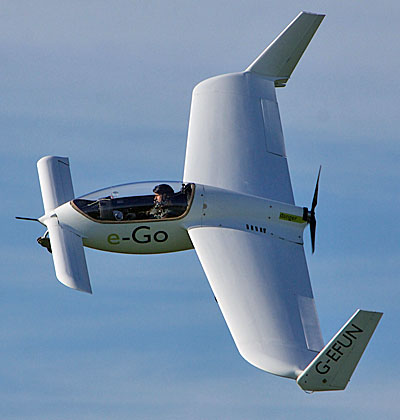 "I was personally astounded. The consultation was very interesting. The LAA who had supported the old 115 kilogram rule (253 pounds, so almost identical to the U.S. Part 103 weight) suddenly came out against the rule asking for a wing loading restriction to be added. I guess they realized that it was a big threat to their monopoly. Even at the consultation stage &mdash after the proposals had been published &mdash the consensus was that eventually the wing loading restriction would be added. The CAA stood firm and the rule was passed without modification. It required an Act of Parliament to become law but eventually it was done."
"The main reason the CAA gave for changing the rules was to stimulate innovation and by picking a unique design code it would avoid sucking in a load of imports and motivate the local manufacturers. The question now was how can we best take advantage of the new freedom?" (I will have more on Graham's answer to this in a later article.)
"I was personally astounded. The consultation was very interesting. The LAA who had supported the old 115 kilogram rule (253 pounds, so almost identical to the U.S. Part 103 weight) suddenly came out against the rule asking for a wing loading restriction to be added. I guess they realized that it was a big threat to their monopoly. Even at the consultation stage &mdash after the proposals had been published &mdash the consensus was that eventually the wing loading restriction would be added. The CAA stood firm and the rule was passed without modification. It required an Act of Parliament to become law but eventually it was done."
"The main reason the CAA gave for changing the rules was to stimulate innovation and by picking a unique design code it would avoid sucking in a load of imports and motivate the local manufacturers. The question now was how can we best take advantage of the new freedom?" (I will have more on Graham's answer to this in a later article.)
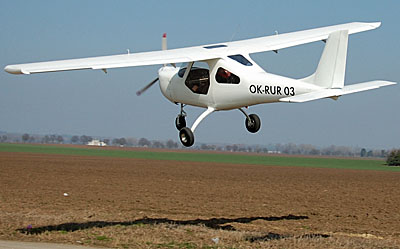 So, what does the CAA SSDR 300 look like?
The "Dereg" category, to use Graham's shorthand, is very simple. CAA said, "Any microlight aeroplane [can qualify] that (A) is designed to carry one person; (B) has a maximum take-off mass of no more than 300 kilograms (660 pounds) ..." — CAA allows 315 kilograms (693 pounds) when equipped with a mounted airframe parachute or 330 kilograms (726 pounds) for a single seat amphibian or floatplane. The last element is, "(C) ... a stall speed or minimum steady flight speed in the landing configuration not exceeding 35 knots (40 mph) calibrated airspeed." However, CAA cautioned, "... many aircraft with indicated stall speeds below 35 knots have calibrated stall speeds well above that figure."
How does England's CAA administrate this SSDR 300? They use a declarative system much like FAA originally specified with the LSA category. CAA stated, "The aircraft owner makes the declaration that their aircraft meets the requirements, i.e., ... falls with the maximum take-off mass and maximum stall speed."
CAA also noted that an existing two seaters can be made into a single seater to qualify so long as it meets the criteria referenced above. No annual inspection is required. Self launching motorgliders are also included but CAA drew the line at rotorcraft, allowing only fixed-wing aircraft, flex-wing (trikes), and powered parachutes. Neither is commercial use allowed.
In my opinion, this is an innovation-inspiring new rule and I commend CAA for talking this bold step. So, FAA ... ?
So, what does the CAA SSDR 300 look like?
The "Dereg" category, to use Graham's shorthand, is very simple. CAA said, "Any microlight aeroplane [can qualify] that (A) is designed to carry one person; (B) has a maximum take-off mass of no more than 300 kilograms (660 pounds) ..." — CAA allows 315 kilograms (693 pounds) when equipped with a mounted airframe parachute or 330 kilograms (726 pounds) for a single seat amphibian or floatplane. The last element is, "(C) ... a stall speed or minimum steady flight speed in the landing configuration not exceeding 35 knots (40 mph) calibrated airspeed." However, CAA cautioned, "... many aircraft with indicated stall speeds below 35 knots have calibrated stall speeds well above that figure."
How does England's CAA administrate this SSDR 300? They use a declarative system much like FAA originally specified with the LSA category. CAA stated, "The aircraft owner makes the declaration that their aircraft meets the requirements, i.e., ... falls with the maximum take-off mass and maximum stall speed."
CAA also noted that an existing two seaters can be made into a single seater to qualify so long as it meets the criteria referenced above. No annual inspection is required. Self launching motorgliders are also included but CAA drew the line at rotorcraft, allowing only fixed-wing aircraft, flex-wing (trikes), and powered parachutes. Neither is commercial use allowed.
In my opinion, this is an innovation-inspiring new rule and I commend CAA for talking this bold step. So, FAA ... ?
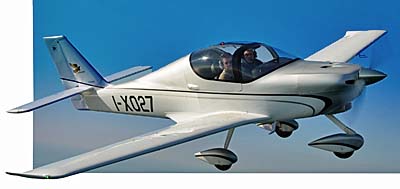 One of my favorite tales was taken from an old Delta Air Lines house magazine, the sort sent to employees of the company before email invaded our lives. Airlines have their own meteorology departments and the Delta guys once wrote, "Every time you forecast the weather, you know you're wrong; you just don't know by how much or when. If you are ever right, never let 'em forget it." Ah, yes, remember when we correctly forecast that big storm, back in 1967? I got a lot of chuckles from telling that story.
Weather forecasting is much better today, but statistics can often be wrong despite best efforts. Along this line, I heard from a reader, an engineer in Italy, "In your article '
One of my favorite tales was taken from an old Delta Air Lines house magazine, the sort sent to employees of the company before email invaded our lives. Airlines have their own meteorology departments and the Delta guys once wrote, "Every time you forecast the weather, you know you're wrong; you just don't know by how much or when. If you are ever right, never let 'em forget it." Ah, yes, remember when we correctly forecast that big storm, back in 1967? I got a lot of chuckles from telling that story.
Weather forecasting is much better today, but statistics can often be wrong despite best efforts. Along this line, I heard from a reader, an engineer in Italy, "In your article '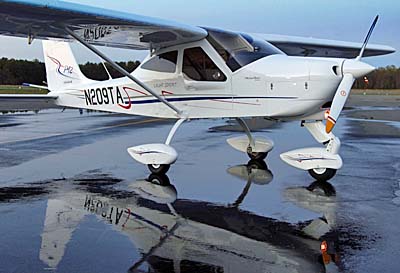 In this update article, I wish to correct that shortcoming and add a couple more pieces of information. The result of my deeper examination pushes sport and recreational aircraft closer to 50,000 worldwide.
My Italian reader, who preferred I did not use his name, wrote, "Apart from being the country from where several LSA aircraft arrive — he mentions
In this update article, I wish to correct that shortcoming and add a couple more pieces of information. The result of my deeper examination pushes sport and recreational aircraft closer to 50,000 worldwide.
My Italian reader, who preferred I did not use his name, wrote, "Apart from being the country from where several LSA aircraft arrive — he mentions  The Italian engineer continued with his amplification, "Although the number (13,000) includes 'ancient' aircraft from the '80s that might be out of commission now, I can confirm that well over 6,000 aircraft are flying from hundreds of grass strips and aerodromes across the country." As such, this places Italy — correctly so, based on corroborating information — in the top tier of countries with a large base of light and sport aircraft.
"The reason why [the aircraft count] is not so obvious," he further clarified, "is that the certification of pilots and aircraft is done outside of ENAC (Italian equivalent of FAA) and therefore does not get reported in the usual channels where numbers of registered aircraft are accounted."
"Ultralight (generally meaning the European name for light two seaters, not the U.S. superlight single seaters) registrations for Italy follow the [aircraft registration] format I-1234, or I-A123 now that we passed 10,000 registrations. I have seen I-C1xx (can't remember the exact number, but it means that we passed 13,000 registrations already)." He added, "I think we had over 2,000 in the last five years or so."
The Italian engineer continued with his amplification, "Although the number (13,000) includes 'ancient' aircraft from the '80s that might be out of commission now, I can confirm that well over 6,000 aircraft are flying from hundreds of grass strips and aerodromes across the country." As such, this places Italy — correctly so, based on corroborating information — in the top tier of countries with a large base of light and sport aircraft.
"The reason why [the aircraft count] is not so obvious," he further clarified, "is that the certification of pilots and aircraft is done outside of ENAC (Italian equivalent of FAA) and therefore does not get reported in the usual channels where numbers of registered aircraft are accounted."
"Ultralight (generally meaning the European name for light two seaters, not the U.S. superlight single seaters) registrations for Italy follow the [aircraft registration] format I-1234, or I-A123 now that we passed 10,000 registrations. I have seen I-C1xx (can't remember the exact number, but it means that we passed 13,000 registrations already)." He added, "I think we had over 2,000 in the last five years or so."
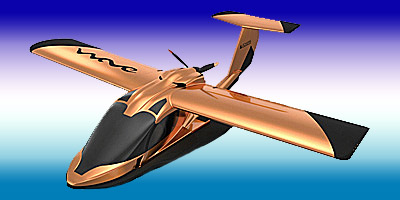 Looking at the pilot side of the equation, he noted, "On a forum I read the impressive number of 17,500 active ultralight pilots."
"So, despite the obvious intention of keeping a low profile to make sure that the Revenue Service does not develop some new creative tax to hit a vulnerable sector, it looks like there are plenty of pilots and planes filling our skies," the Italian writer concluded. He then invited, "Come visit and we'll be happy to show you around." That's an offer I'd like to take when I also wish to visit the large Tecnam facility in Italy.
My source finished his message saying, "I fly a older Aeronca with American N-numbers using an FAA Private certificate and therefore I don't even show up in that list."
I also managed to overlook two other countries of note. My apology and the only excuse I can offer is that
Looking at the pilot side of the equation, he noted, "On a forum I read the impressive number of 17,500 active ultralight pilots."
"So, despite the obvious intention of keeping a low profile to make sure that the Revenue Service does not develop some new creative tax to hit a vulnerable sector, it looks like there are plenty of pilots and planes filling our skies," the Italian writer concluded. He then invited, "Come visit and we'll be happy to show you around." That's an offer I'd like to take when I also wish to visit the large Tecnam facility in Italy.
My source finished his message saying, "I fly a older Aeronca with American N-numbers using an FAA Private certificate and therefore I don't even show up in that list."
I also managed to overlook two other countries of note. My apology and the only excuse I can offer is that 
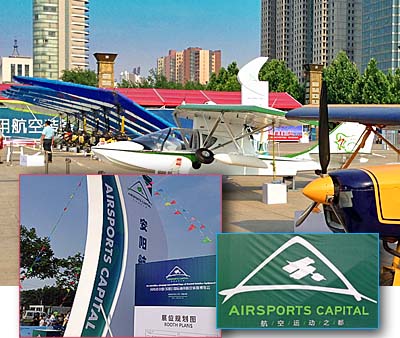
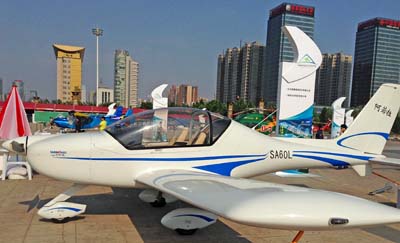



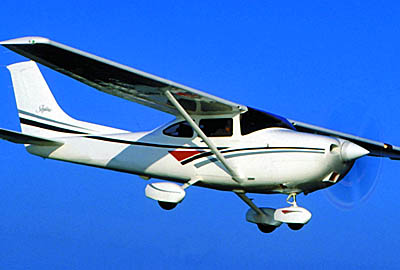 Thanks to a solid effort by
Thanks to a solid effort by 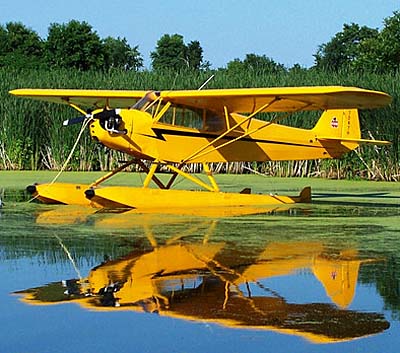 To provide some perspective, let's look at certified GA aircraft first. From its peak in 1978, U.S.-manufactured GA deliveries have fallen dramatically, by 93% from 14,398 single engine piston aircraft in 1978 to 986 in 2014. Fortunately, since 2000 the continuing drop is less severe, for example in 2006, worldwide GAMA members reported delivering a new millennia peak of 2,513 aircraft; the decline to 986 is a drop of 61%. The '60s and '70s were clearly the "golden era" for GA piston airplane production. Accounting for this drop, beside pilot population decreases (see below) and airplanes lasting so long — the average age of four seater is 38.2 years old — most competition likely came from non-flying activities. Among aircraft choices, Experimentals in the last two decades have grown 143% to nearly 25,000 aircraft. LSA in fully built or kit form add to GA's competition although much less so partly as Experimentals have been around much longer.
Overall, the overall GA fleet has held reasonably steady despite the references above, declining from a peak of piston airplanes in FAA's registry of 197,442 in 1984 to 137,655 in 2013, a drop of about 30%. When you add kit-built aircraft and LSA, the total fleet numbers look relatively stable.
In geographic location of that U.S. aircraft fleet the conventional knowledge about the biggest three states still holds, with California having 26,141 aircraft registered, followed by Texas at 22,851, trailed by Florida at 18,162. The next closest state (Washington) has barely half the Florida count ... but see below for where pilots live.
To provide some perspective, let's look at certified GA aircraft first. From its peak in 1978, U.S.-manufactured GA deliveries have fallen dramatically, by 93% from 14,398 single engine piston aircraft in 1978 to 986 in 2014. Fortunately, since 2000 the continuing drop is less severe, for example in 2006, worldwide GAMA members reported delivering a new millennia peak of 2,513 aircraft; the decline to 986 is a drop of 61%. The '60s and '70s were clearly the "golden era" for GA piston airplane production. Accounting for this drop, beside pilot population decreases (see below) and airplanes lasting so long — the average age of four seater is 38.2 years old — most competition likely came from non-flying activities. Among aircraft choices, Experimentals in the last two decades have grown 143% to nearly 25,000 aircraft. LSA in fully built or kit form add to GA's competition although much less so partly as Experimentals have been around much longer.
Overall, the overall GA fleet has held reasonably steady despite the references above, declining from a peak of piston airplanes in FAA's registry of 197,442 in 1984 to 137,655 in 2013, a drop of about 30%. When you add kit-built aircraft and LSA, the total fleet numbers look relatively stable.
In geographic location of that U.S. aircraft fleet the conventional knowledge about the biggest three states still holds, with California having 26,141 aircraft registered, followed by Texas at 22,851, trailed by Florida at 18,162. The next closest state (Washington) has barely half the Florida count ... but see below for where pilots live.
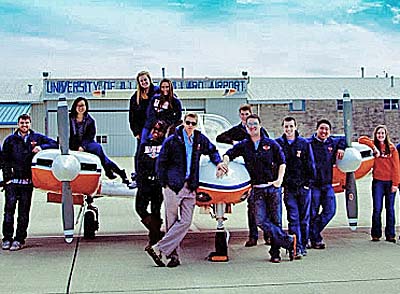 The number of airmen — pilots with certificates — explains some of the aircraft delivery decreases. From a peak in GAMA's numbers of 827,071 licensed pilots in 1980 to the current number of 593,499, I calculate a drop of 28% over 34 years. Keep in mind that nearly 47,000 of those airmen are not Americans but foreign nationals holding a U.S. certificate. Private Pilots have dropped by 51%, but many of those probably went on to higher ratings as ATPs grew by 120% in the same period to account for 26% of all certificate holders. No doubt related to that, CFIs grew by 67% to become 17% of all certificate holders and pilots with Instrument ratings also increased by 18%. Those holding a Spot Pilot certificate now totals 5,157, reported GAMA, while Recreational Pilot peaked at 343 in 1999 and has since shrunk to only 220 certificates. Neither of the last two amount to even 1% of all license holders though the other certificate categories have several decades of history the newer ones lack.
You might lament the Sport Pilot certificate numbers. Certainly, many in the GA world thought Sport Pilot was single-handedly going to grow the pilot population a lot more. While I do not believe that was ever a realistic expectation, here's some good news.
Most pilots I know think the pilot population is graying quickly and that we may be in danger of running out of pilots. GAMA's stats say otherwise. The biggest single category may be what you expect with those aged 50-64 counting 179,277 pilots but the surprising second largest segment is close behind. Those aged a young 20-35 years old number 173,396 pilots. The 35-50 cohort is much smaller, perhaps as they are busy raising families and paying for mortgages and college eductions for their kids.
In the top ten states for pilot populations, California still leads with 59,213 but Florida has climbed into the number #2 slot at 52,976 — and the state is number one in flight instructors with 9,592 — followed by Texas with 49,614 total pilots, Washington state (18,665), Georgia (18,131), Arizona (18,029), Illinois (16,307), New York (15,949), Pennsylvania (15,187), and Ohio (15,137).
Now let's look at LSA-type aircraft elsewhere in the world. I have
The number of airmen — pilots with certificates — explains some of the aircraft delivery decreases. From a peak in GAMA's numbers of 827,071 licensed pilots in 1980 to the current number of 593,499, I calculate a drop of 28% over 34 years. Keep in mind that nearly 47,000 of those airmen are not Americans but foreign nationals holding a U.S. certificate. Private Pilots have dropped by 51%, but many of those probably went on to higher ratings as ATPs grew by 120% in the same period to account for 26% of all certificate holders. No doubt related to that, CFIs grew by 67% to become 17% of all certificate holders and pilots with Instrument ratings also increased by 18%. Those holding a Spot Pilot certificate now totals 5,157, reported GAMA, while Recreational Pilot peaked at 343 in 1999 and has since shrunk to only 220 certificates. Neither of the last two amount to even 1% of all license holders though the other certificate categories have several decades of history the newer ones lack.
You might lament the Sport Pilot certificate numbers. Certainly, many in the GA world thought Sport Pilot was single-handedly going to grow the pilot population a lot more. While I do not believe that was ever a realistic expectation, here's some good news.
Most pilots I know think the pilot population is graying quickly and that we may be in danger of running out of pilots. GAMA's stats say otherwise. The biggest single category may be what you expect with those aged 50-64 counting 179,277 pilots but the surprising second largest segment is close behind. Those aged a young 20-35 years old number 173,396 pilots. The 35-50 cohort is much smaller, perhaps as they are busy raising families and paying for mortgages and college eductions for their kids.
In the top ten states for pilot populations, California still leads with 59,213 but Florida has climbed into the number #2 slot at 52,976 — and the state is number one in flight instructors with 9,592 — followed by Texas with 49,614 total pilots, Washington state (18,665), Georgia (18,131), Arizona (18,029), Illinois (16,307), New York (15,949), Pennsylvania (15,187), and Ohio (15,137).
Now let's look at LSA-type aircraft elsewhere in the world. I have 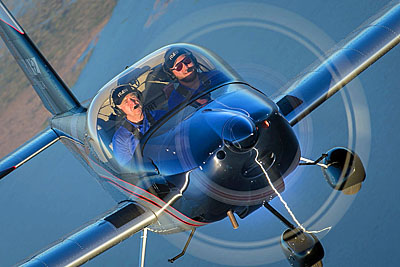 Where I could identify microlights, ultralights, or LSA types, I calculated 19,613 aircraft in what might be called "greater Europe" (mostly EU countries). Making an informed guess of at least 4,000 "microlight/ultralight" for Germany — which country, as noted above, did not supply a detailed value for this category — and adding non-European countries such as South Africa (6,072 including "Sport, Recreational, and Experimental"), Canada (7,125 "ultralights"), and Brazil plus Asian countries (small counts for several nations), I make a best estimate of about 40,000 LSA-type aircraft outside the USA. This figure includes estimates for Sweden and Switzerland that did not break out their reporting. Also included in the 40,000 count is England with strong numbers of 4,029 "microlights" and 3,269 "Fixed Wing Aeroplanes of less than 750 kilograms" (1,650 pounds). See updated figures in
Where I could identify microlights, ultralights, or LSA types, I calculated 19,613 aircraft in what might be called "greater Europe" (mostly EU countries). Making an informed guess of at least 4,000 "microlight/ultralight" for Germany — which country, as noted above, did not supply a detailed value for this category — and adding non-European countries such as South Africa (6,072 including "Sport, Recreational, and Experimental"), Canada (7,125 "ultralights"), and Brazil plus Asian countries (small counts for several nations), I make a best estimate of about 40,000 LSA-type aircraft outside the USA. This figure includes estimates for Sweden and Switzerland that did not break out their reporting. Also included in the 40,000 count is England with strong numbers of 4,029 "microlights" and 3,269 "Fixed Wing Aeroplanes of less than 750 kilograms" (1,650 pounds). See updated figures in 
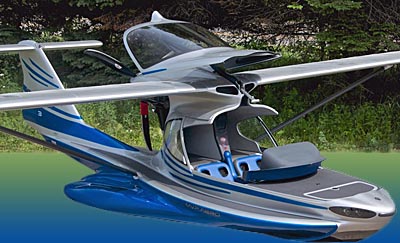
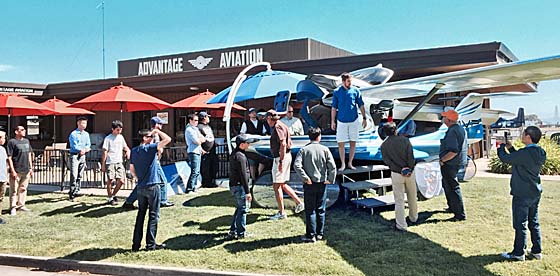
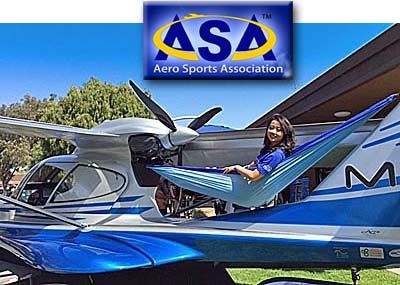
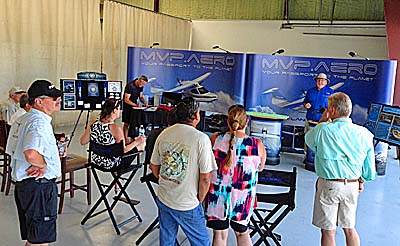
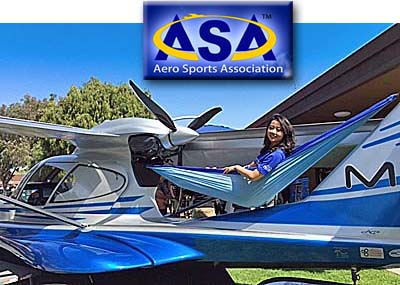

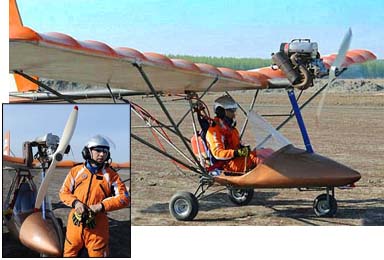 WEEKEND UPDATE — Next week I leave for my first visit to China, specifically to Anyang City, by train a couple hours south of Beijing where the seventh running of an annual airshow is planned. I have only a sketchy idea what to expect even though Shu Dong Li of the
WEEKEND UPDATE — Next week I leave for my first visit to China, specifically to Anyang City, by train a couple hours south of Beijing where the seventh running of an annual airshow is planned. I have only a sketchy idea what to expect even though Shu Dong Li of the  In an interesting coincidence, I discovered a story about a Chinese fellow who built his own ultralight from available materials and took to the air in it. He's not alone in this, of course, but I found his work an intriguing example of ordinary Chinese citizens showing an interest in flying for fun.
An article in the
In an interesting coincidence, I discovered a story about a Chinese fellow who built his own ultralight from available materials and took to the air in it. He's not alone in this, of course, but I found his work an intriguing example of ordinary Chinese citizens showing an interest in flying for fun.
An article in the 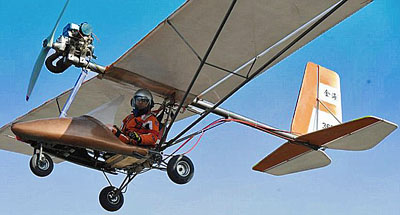 The two news organizations reported that on a recent Sunday Yang successfully took off and landed 10 times in Jilin province, located in northeast China. According to writer Emily Chan he took the airplane up to 650 feet and has since logged 2.5 hours of flying time.
Builder and pilot Yang said that his aircraft, allegedly "made from scrap metal," can reach a top speed of 120 kilometers per hour (75 mph) and has a cruising speed of 80 km/hr or 50 mph. Yang's ultralight-like airplane has a wingspan of about 30 feet and weighs 242 pounds. Journalist Chan reported that he has test flown his creation on two other occasions, including a 54-minute flight on his late father's birthday last September.
The two news organizations reported that on a recent Sunday Yang successfully took off and landed 10 times in Jilin province, located in northeast China. According to writer Emily Chan he took the airplane up to 650 feet and has since logged 2.5 hours of flying time.
Builder and pilot Yang said that his aircraft, allegedly "made from scrap metal," can reach a top speed of 120 kilometers per hour (75 mph) and has a cruising speed of 80 km/hr or 50 mph. Yang's ultralight-like airplane has a wingspan of about 30 feet and weighs 242 pounds. Journalist Chan reported that he has test flown his creation on two other occasions, including a 54-minute flight on his late father's birthday last September.
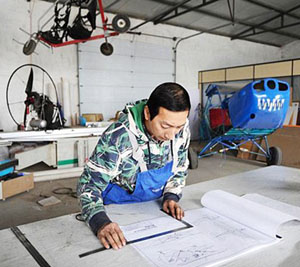 As I looked at the photos for this airplane I knew it looked familiar, in particular a
As I looked at the photos for this airplane I knew it looked familiar, in particular a 

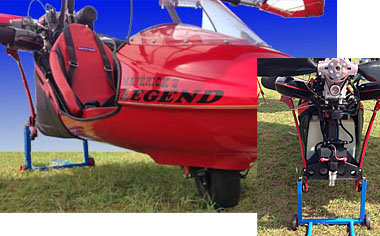
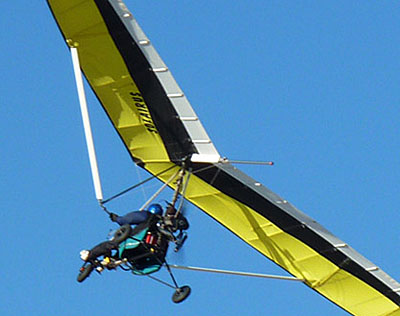
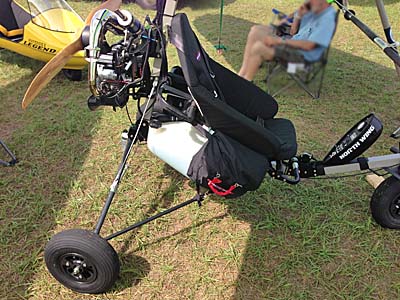

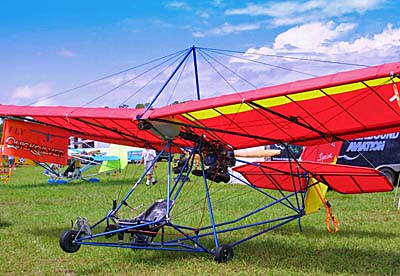
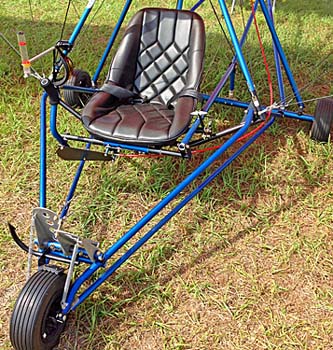



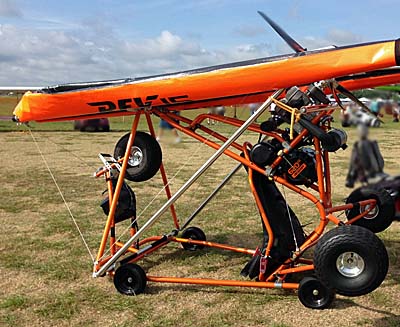 Earlier I've written that the Part 103 ultralight sector seemed more vibrant than ever at this year's Sun 'n Fun. I admit a bias. I love Part 103 ... the aircraft, the concept, I like flying single seat aircraft, and, hugely, I love that Part 103 deftly avoids most of the interference from government officials that tends to dominate so much of aviation worldwide. While certified aircraft have hundreds or thousands of pages of regulations they must follow, Part 103's entire ruleset can be printed on the front and back of a single piece of paper. That's fantastic!
Earlier a few folks reading my enthusiasm about Sun 'n Fun 2015 exhibits of Part 103 machines voiced doubt that these machines can actually qualify — meeting the challenging empty weight of 254 pounds (278 if a parachute is mounted; more if floats are added); the max speed of 55 knots or 63 mph; the stall of 24 knots or 28 mph; the five gallons of fuel, and, well ... that's nearly it.
Earlier I've written that the Part 103 ultralight sector seemed more vibrant than ever at this year's Sun 'n Fun. I admit a bias. I love Part 103 ... the aircraft, the concept, I like flying single seat aircraft, and, hugely, I love that Part 103 deftly avoids most of the interference from government officials that tends to dominate so much of aviation worldwide. While certified aircraft have hundreds or thousands of pages of regulations they must follow, Part 103's entire ruleset can be printed on the front and back of a single piece of paper. That's fantastic!
Earlier a few folks reading my enthusiasm about Sun 'n Fun 2015 exhibits of Part 103 machines voiced doubt that these machines can actually qualify — meeting the challenging empty weight of 254 pounds (278 if a parachute is mounted; more if floats are added); the max speed of 55 knots or 63 mph; the stall of 24 knots or 28 mph; the five gallons of fuel, and, well ... that's nearly it.
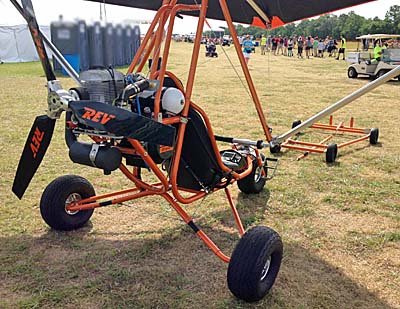 Of course I couldn't weigh each machine out in the fields of Sun 'n Fun's Paradise City, but I did probe with each vendor interviewed, "Are you certain this meets Part 103's parameters faithfully?" Each answered, "Yes!" although they also noted that customers sometimes like to add options that can push the vehicle out of 103.
One of the most fun was
Of course I couldn't weigh each machine out in the fields of Sun 'n Fun's Paradise City, but I did probe with each vendor interviewed, "Are you certain this meets Part 103's parameters faithfully?" Each answered, "Yes!" although they also noted that customers sometimes like to add options that can push the vehicle out of 103.
One of the most fun was 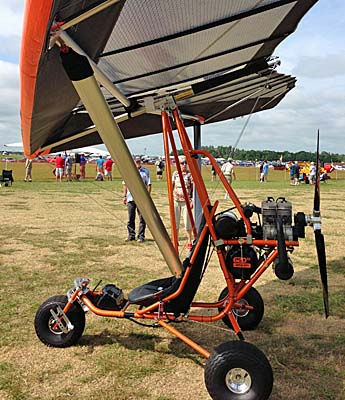 As you look at the lead photo, you have to wonder if this thing just crashed and jumbled its tubing into a mess. You can be excused for wondering. However, what you see above is Rev in compact — and wheeled — form so it can be moved around easily inside a hangar or onto a trailer. Because Part 103 trikes are limited to 60 mph, owners may trailer their rig; also, an enclosed trailer can make an inexpensive hangar.
Rev cleverly folds from its collapsed configuration to flight or the reverse in a mere six minutes and even those minutes won't strain your back, thanks to the ingenious thinking of lead developer Larry Mednick. He's proved his design prowess with the marvelous Revo and he's done it again with the far simpler Rev.
Rev's wing is intended to stay attached, folding into flight position while mounted to the trike carriage. Then the carriage itself folds to allow movement on the ground with a second carriage (see second and fourth photos). Yet, as the late-night TV advertorials boast, "That's not all!"
As you look at the lead photo, you have to wonder if this thing just crashed and jumbled its tubing into a mess. You can be excused for wondering. However, what you see above is Rev in compact — and wheeled — form so it can be moved around easily inside a hangar or onto a trailer. Because Part 103 trikes are limited to 60 mph, owners may trailer their rig; also, an enclosed trailer can make an inexpensive hangar.
Rev cleverly folds from its collapsed configuration to flight or the reverse in a mere six minutes and even those minutes won't strain your back, thanks to the ingenious thinking of lead developer Larry Mednick. He's proved his design prowess with the marvelous Revo and he's done it again with the far simpler Rev.
Rev's wing is intended to stay attached, folding into flight position while mounted to the trike carriage. Then the carriage itself folds to allow movement on the ground with a second carriage (see second and fourth photos). Yet, as the late-night TV advertorials boast, "That's not all!"
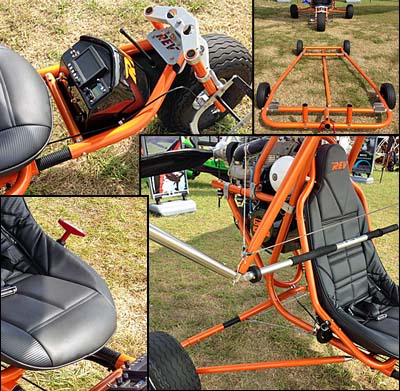 Once the wings — of this simpler, single surface design with nifty wing ribs that insert easier than ever — are unfolded, the ground-movement carriage is detached, and the nosewheel assembly plugged in, the wing lifts quite easily into flying condition. Even the "haul-back" is easier (haul-back is an action to fully deploy and tension the wings to flying condition; it can be difficult on some large, tight wings).
One the wing is fully erected over its carriage, you attach the standard forward support strut ... except, nope, you don't! Like very few trikes on the market, Rev is design to support the wing from the rear, making forward visibility the best I've seen in recent memory. This has been done before, but it's rare and the earlier efforts were not this slick. For those nervous about the lack of a forward strut, Rev is designed to accommodate one if you wish (as an option).
Similar to his superb Revo, Larry has left few details needing any further attention. As you look at the detail image collage, you see the whole creation is thoughtfully considered. An instrument panel is nestled behind the beefy front wheel; it can be configured in various ways (though you'll need to restrain your impulses if Rev is to remain in Part 103). It has comfortable foot rests and even the throttle hook up to the right pedal is neatly achieved.
Large main gear tires combine with a robust nosewheel to assure landing on rough fields won't provide a threat and all three wheels use a smart but simple and light form of suspension (see black insert in rear gear leg and under the seat of the front support arms). Even the nosewheel gusset has a fine touch with the product name machined into the plate. A parachute is fitted, allowing empty weight to rise in a way that "buys" a few extra pounds (the parachute weighs slightly less than FAA's AC 103-7 allows).
Of course, some buyers will simply have to add some options and Evolution has several. Adding too much will push Rev into Experimental Amateur Built where a pilot license, medical, and N-number will be needed but Evolution offers various ways to personalize your Rev. Looking like the one in the photos and fully optioned out, Rev will exceed $33,000. However, with its standard Kawasaki 440 (40 hp) engine and still a mighty nice machine, Rev lists for just $17,900. That's terrific. Go, Rev!
Once the wings — of this simpler, single surface design with nifty wing ribs that insert easier than ever — are unfolded, the ground-movement carriage is detached, and the nosewheel assembly plugged in, the wing lifts quite easily into flying condition. Even the "haul-back" is easier (haul-back is an action to fully deploy and tension the wings to flying condition; it can be difficult on some large, tight wings).
One the wing is fully erected over its carriage, you attach the standard forward support strut ... except, nope, you don't! Like very few trikes on the market, Rev is design to support the wing from the rear, making forward visibility the best I've seen in recent memory. This has been done before, but it's rare and the earlier efforts were not this slick. For those nervous about the lack of a forward strut, Rev is designed to accommodate one if you wish (as an option).
Similar to his superb Revo, Larry has left few details needing any further attention. As you look at the detail image collage, you see the whole creation is thoughtfully considered. An instrument panel is nestled behind the beefy front wheel; it can be configured in various ways (though you'll need to restrain your impulses if Rev is to remain in Part 103). It has comfortable foot rests and even the throttle hook up to the right pedal is neatly achieved.
Large main gear tires combine with a robust nosewheel to assure landing on rough fields won't provide a threat and all three wheels use a smart but simple and light form of suspension (see black insert in rear gear leg and under the seat of the front support arms). Even the nosewheel gusset has a fine touch with the product name machined into the plate. A parachute is fitted, allowing empty weight to rise in a way that "buys" a few extra pounds (the parachute weighs slightly less than FAA's AC 103-7 allows).
Of course, some buyers will simply have to add some options and Evolution has several. Adding too much will push Rev into Experimental Amateur Built where a pilot license, medical, and N-number will be needed but Evolution offers various ways to personalize your Rev. Looking like the one in the photos and fully optioned out, Rev will exceed $33,000. However, with its standard Kawasaki 440 (40 hp) engine and still a mighty nice machine, Rev lists for just $17,900. That's terrific. Go, Rev!

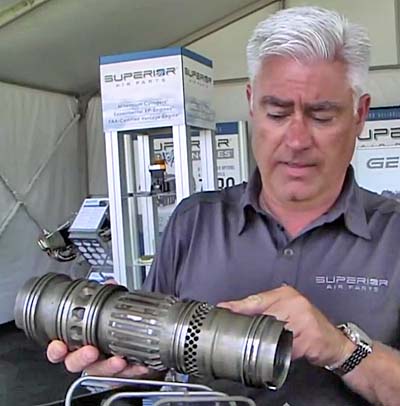

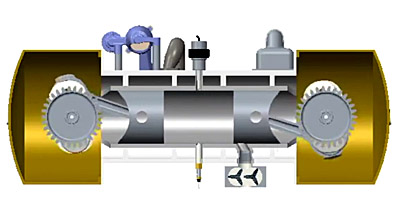

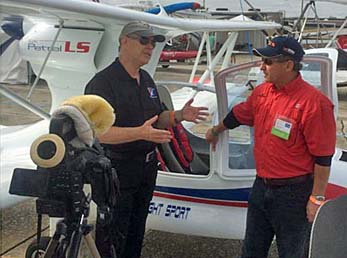
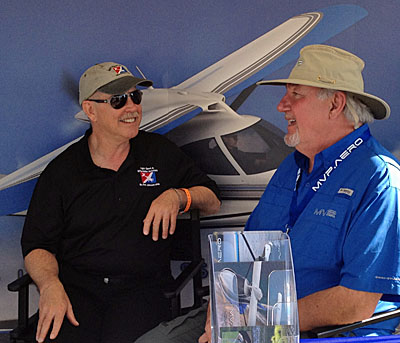
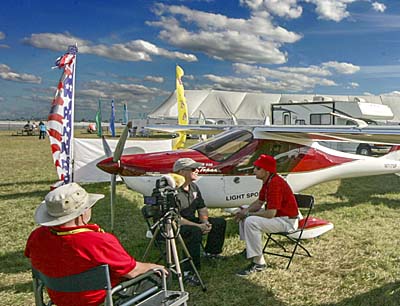

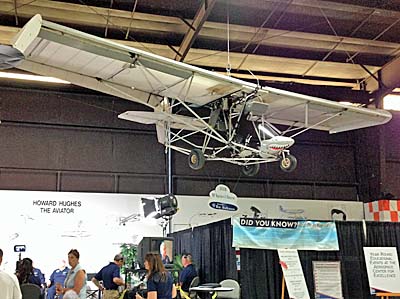
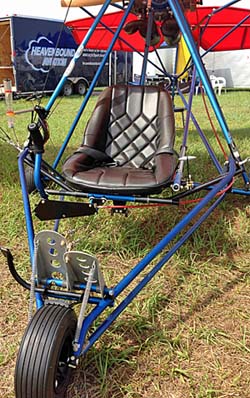
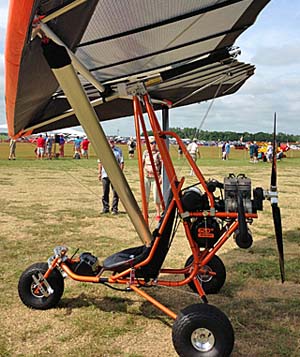
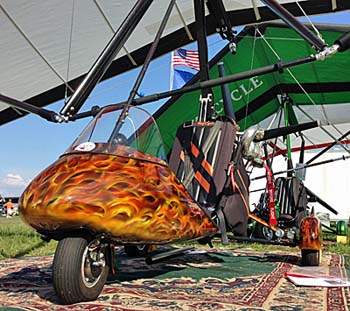

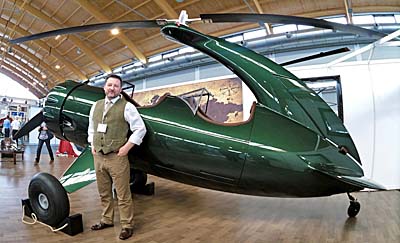 In the eleven magical halls of
In the eleven magical halls of 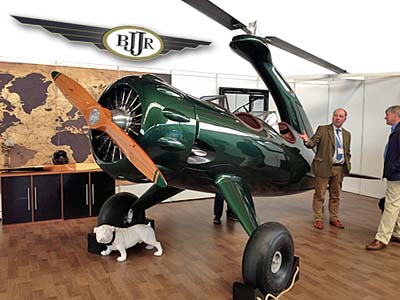 A few light aircraft are located in the "A" halls, partly due to available space being taken in the "B" halls and possibly as those vendors prefer to be on the GA side of the event. Most of the avionics, headset, and traditional aircraft companies are in the "A" side and some light aircraft manufacturers may see those buyers as their primary market. This is especially true for more costly aircraft or those that exceed the U.S. LSA category by virtue of having retractable landing gear and in-flight adjustable props.
To cover everything in the light space I made my way around all the halls. Via numerous conversations I was encouraged to visit the exhibit of a radial-engined autogyro. I had my doubts because this seemed outside my usual focus and interest. However, once I came upon
A few light aircraft are located in the "A" halls, partly due to available space being taken in the "B" halls and possibly as those vendors prefer to be on the GA side of the event. Most of the avionics, headset, and traditional aircraft companies are in the "A" side and some light aircraft manufacturers may see those buyers as their primary market. This is especially true for more costly aircraft or those that exceed the U.S. LSA category by virtue of having retractable landing gear and in-flight adjustable props.
To cover everything in the light space I made my way around all the halls. Via numerous conversations I was encouraged to visit the exhibit of a radial-engined autogyro. I had my doubts because this seemed outside my usual focus and interest. However, once I came upon 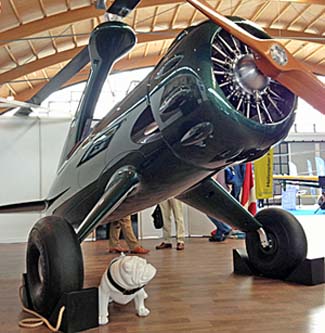 Let's clarify. This is not Auto Gyro, the largest producer of modern gyroplanes. Neither is Bulldog a conventional gyroplane. It is an autogyro, meaning the classic taildragging, engine-in-front, more conventional airplane-looking, rotary-winged aircraft. One of the most well-known autogyros is the
Let's clarify. This is not Auto Gyro, the largest producer of modern gyroplanes. Neither is Bulldog a conventional gyroplane. It is an autogyro, meaning the classic taildragging, engine-in-front, more conventional airplane-looking, rotary-winged aircraft. One of the most well-known autogyros is the 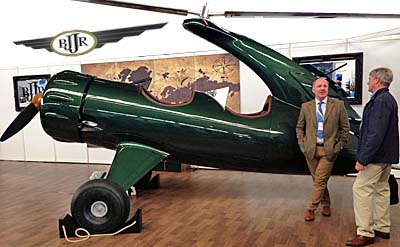 Why create such a graceful curved mast? Is it yet another feature to distinguish this unique aircraft. Yes and no. No, in that it is not just art, though it has that quality. Yes, in that it has real merit from a safety standpoint. Barry observed, "All helicopters and autogyros with tail sections to position a tail rotor or rudder to the rear of the aircraft can suffer from incidents when a rotor blade strikes the tail section. Through the Bulldog's design, we have been able to completely remove this threat to pilots."
Barry Jones' concept is a machine one flies for the sheer joy of it. Going fast is not the objective, a reason he selected wide chord rotor blades among other design decisions. His mission to preserve an period of aviation history in a modernized aircraft should attract discerning buyers. I overheard some fellow journalists saying this was an airplane for classic car enthusiast types and that may be a fair characterization. Barry isn't expecting to make thousands of these but he is expecting to make an impression on his buyers. He certainly made an impression on me and many others that often crowded around the airplane.
For a first build, Bulldog Autogyro as displayed at Aero 2015 looked terrific. Most prototypes are not so well finished. Barry has engaged several premium vendors such as a Formula I race car producer to help with the composite and a professional designer to create a fine vintage leather interior.
Barry expects to fly the Bulldog Autogyro in July 2015, just about as EAA AirVenture Oshkosh is beginning. I promised to keep watching and after he has some flying footage we may combine some of those scenes with the video interview I shot with him at Aero. Watch for it.
Radial Engine Specifications:
Engine Manufacturer — Rotec Radial Engines
Configuration — 9 Cylinder Four Stroke Radial Engine of 3600 cc displacement
Rated Power — 150 horsepower @ 3600 rpm
Recommended Fuel — 100LL Avgas or High Octane Mogas
Fuel Consumption — 27 liters per hour or 7.13 gallons per hour
Configuration — Air cooled (no radiator); Dual ignition with dual spark plugs
Why create such a graceful curved mast? Is it yet another feature to distinguish this unique aircraft. Yes and no. No, in that it is not just art, though it has that quality. Yes, in that it has real merit from a safety standpoint. Barry observed, "All helicopters and autogyros with tail sections to position a tail rotor or rudder to the rear of the aircraft can suffer from incidents when a rotor blade strikes the tail section. Through the Bulldog's design, we have been able to completely remove this threat to pilots."
Barry Jones' concept is a machine one flies for the sheer joy of it. Going fast is not the objective, a reason he selected wide chord rotor blades among other design decisions. His mission to preserve an period of aviation history in a modernized aircraft should attract discerning buyers. I overheard some fellow journalists saying this was an airplane for classic car enthusiast types and that may be a fair characterization. Barry isn't expecting to make thousands of these but he is expecting to make an impression on his buyers. He certainly made an impression on me and many others that often crowded around the airplane.
For a first build, Bulldog Autogyro as displayed at Aero 2015 looked terrific. Most prototypes are not so well finished. Barry has engaged several premium vendors such as a Formula I race car producer to help with the composite and a professional designer to create a fine vintage leather interior.
Barry expects to fly the Bulldog Autogyro in July 2015, just about as EAA AirVenture Oshkosh is beginning. I promised to keep watching and after he has some flying footage we may combine some of those scenes with the video interview I shot with him at Aero. Watch for it.
Radial Engine Specifications:
Engine Manufacturer — Rotec Radial Engines
Configuration — 9 Cylinder Four Stroke Radial Engine of 3600 cc displacement
Rated Power — 150 horsepower @ 3600 rpm
Recommended Fuel — 100LL Avgas or High Octane Mogas
Fuel Consumption — 27 liters per hour or 7.13 gallons per hour
Configuration — Air cooled (no radiator); Dual ignition with dual spark plugs
